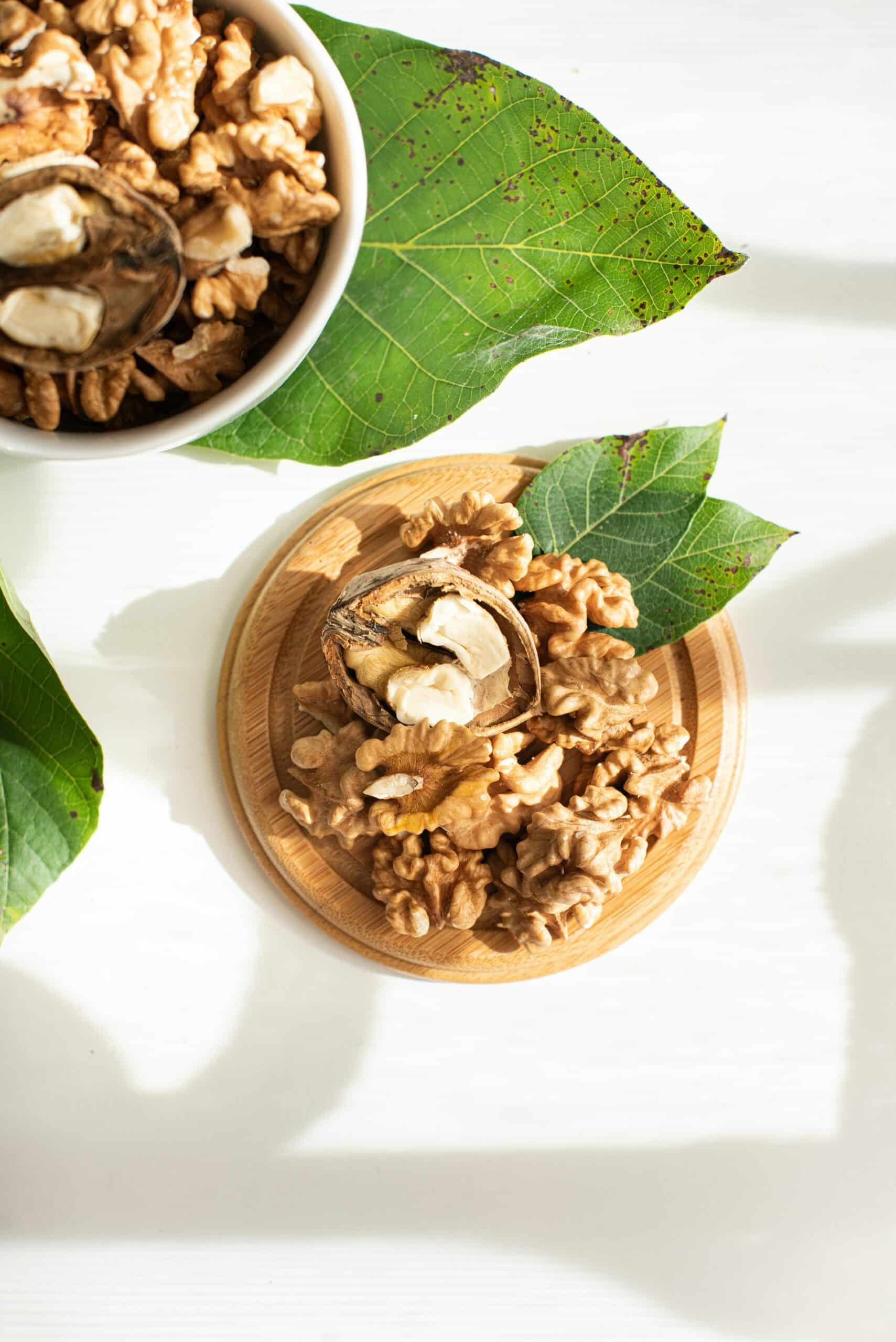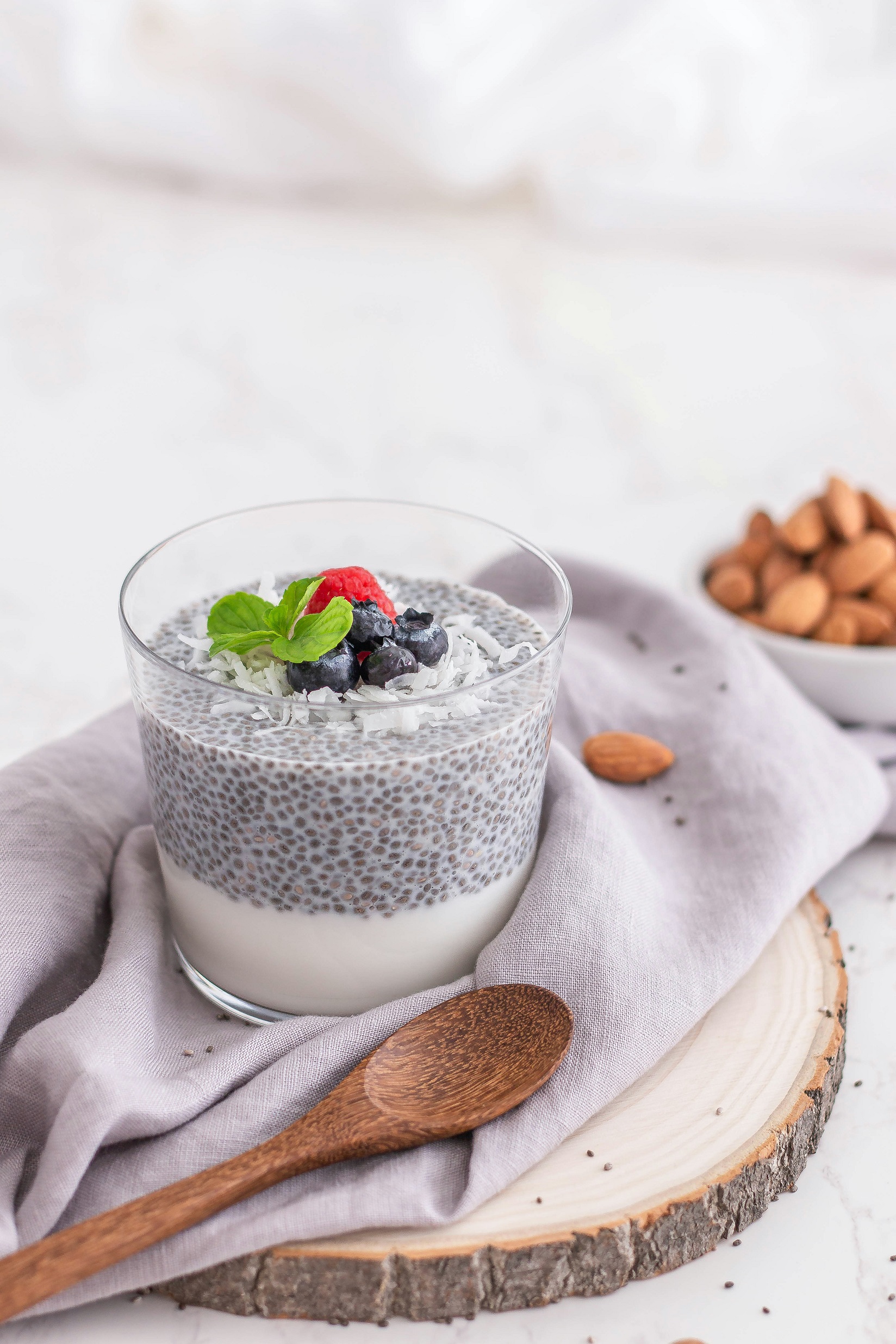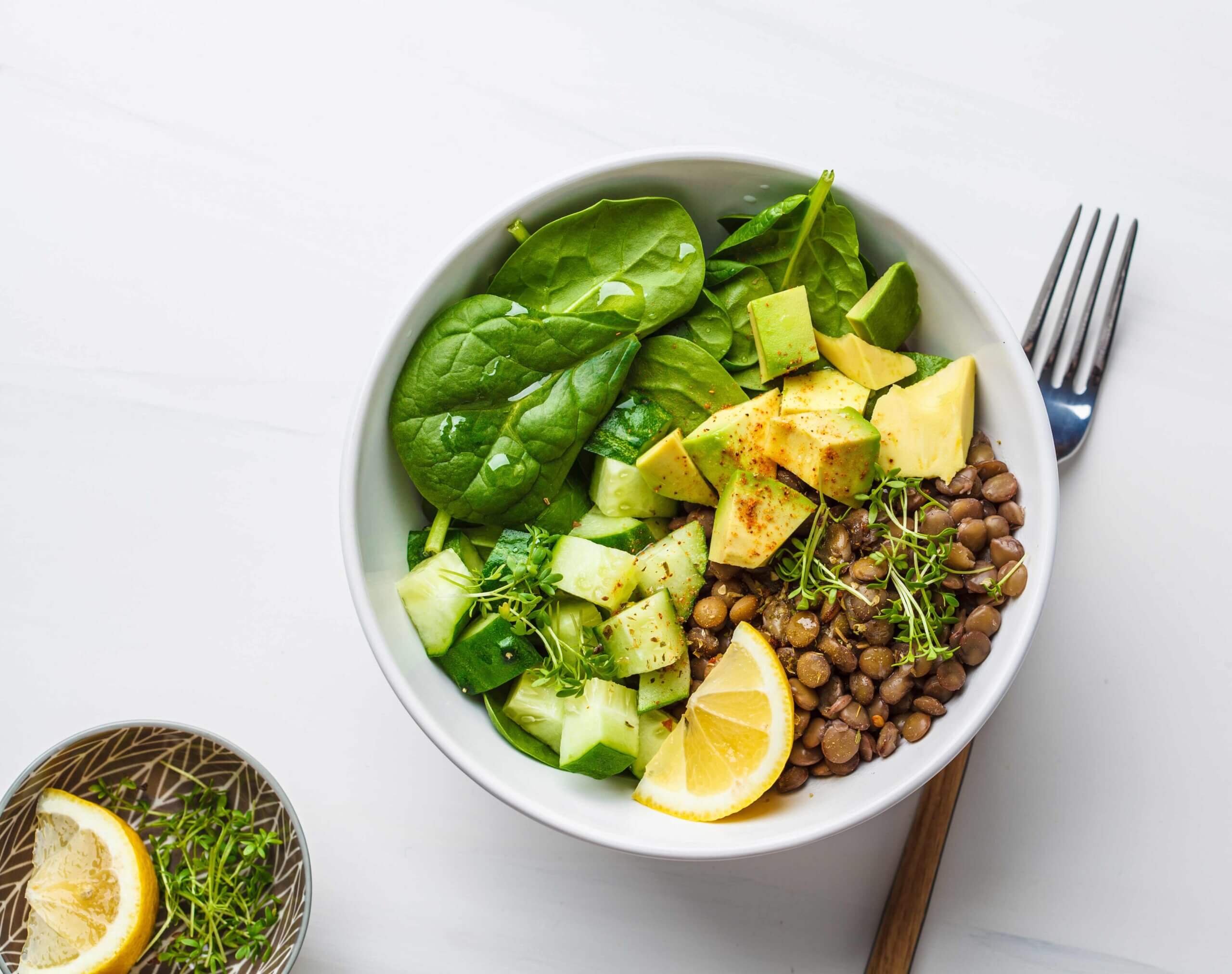Are you ready to boost your energy, sharpen your focus and support your body with a healthy, plant-based diet? Then omega-3 should definitely be on your radar! These essential fatty acids are true all-rounders – especially if you follow a vegan lifestyle. In this article, you’ll find out what omega-3 actually is, why EPA and DHA matter so much for your health, and how you can meet your needs without eating fish.
So, what is omega-3?
Omega-3 fatty acids are a type of polyunsaturated fat. They’re essential for many functions in your body – and as the name suggests, they’re essential, meaning your body can’t produce them on its own. You need to get them from your diet, or from supplements if necessary.
There are two key essential fatty acids:
- Alpha-linolenic acid (ALA) – from the omega-3 family
- Linoleic acid – from the omega-6 family
Then there are so-called conditionally essential fatty acids:
- Eicosapentaenoic acid (EPA)
- Docosahexaenoic acid (DHA)
Your body can technically convert ALA into EPA and DHA – but only in very small amounts. The conversion rate from ALA to EPA is around 8–12%, and for DHA it’s often less than 1%. Stress, alcohol, poor diet, and even your general health can make this conversion even less efficient. That’s why many experts recommend getting EPA and DHA directly – especially important if you eat plant-based, since you’re skipping the main animal sources. Luckily, there’s a vegan solution: algae oil.
[1,2]
Why your body really needs omega-3?
Omega-3 is not just a wellness trend – it’s a must for your health. These fatty acids play a role in so many vital processes:
- Cell structure: Omega-3s are key building blocks of your cell membranes. They keep your cells flexible and functioning properly – especially in your nervous system and your eyes. [3,4]
- Gut health: Omega-3s support a healthy gut microbiome. They promote the diversity of good bacteria and help regulate inflammation – which is particularly helpful in conditions like Crohn’s disease or leaky gut. [5]
- Heart health: EPA and DHA can help lower high cholesterol, improve triglyceride levels, regulate blood pressure, and reduce the risk of heart disease and stroke. [6,7]
- Brain & mood: DHA is especially important for brain performance, concentration and emotional balance. Around 10–15% of the fat in your brain is DHA! A lack of omega-3 has been linked to mood disorders and cognitive decline. [8,9,10,11]
- Eyes & vision: DHA is a major component of the retina and is essential for normal vision. It also plays a key role in eye and brain development in babies and children. [3,12,13,14]
In short: your body can’t function at its best without omega-3.
“
Let food be thy medicine and medicine be thy food.
Hippokrates
Which foods contain omega-3?
Even without fish, you can meet your omega-3 needs beautifully. Plant-based sources provide ALA, which your body can (partially) convert into EPA and DHA:
- Flaxseeds & flaxseed oil (especially rich in ALA)
- Chia seeds
- Hemp seeds
- Walnuts
- Rapeseed oil
- Algae oil (the only direct vegan source of EPA and DHA!)
Important: ALA is great – but it’s only the precursor. If you want to be sure your brain and heart are getting enough EPA and DHA, it’s hard to avoid algae oil as a vegan.
If you’re looking for a high-quality plant-based source, I warmly recommend BEYOND omega. These vegan capsules contain pure algae oil from Schizochytrium sp., rich in EPA and DHA – ideal for those who want to be on the safe side.
How much omega-3 do you actually need?
According to the European Food Safety Authority (EFSA), adults should aim for a daily intake of 250 mg of EPA + DHA.
The German and Austrian nutrition societies don’t set specific values for EPA and DHA, but they do recommend that ALA should make up 0.5% of your total energy intake. For someone consuming 2,100 kcal per day, that’s about 1.1 to 1.5 g of ALA. [15] You’ll get that amount from:
- 1 tbsp cold-pressed flaxseed oil
- 1 tbsp ground flaxseeds
- 1 tbsp chia seeds
- 30 g walnuts
Some studies suggest that vegans should aim for even more – up to 2–4 g of ALA daily. [1]


Why omega-3 matters so much on a vegan diet?
Most people get EPA and DHA from fish. In a vegan diet, that source is gone – and since ALA conversion is limited, it’s easy to come up short. Studies show that vegans often have significantly lower blood levels of EPA and DHA than people who eat mixed diets. [16,17]
On top of that, plant-based diets are often high in omega-6 (for example, from sunflower oil). Omega-6 competes with omega-3 in the body, so too much of it can block the benefits of omega-3.
So if you’re eating plant-based: make omega-3 a priority!
Omega-6: Why balance is everything?
Omega-6 fats are essential too – but in excess, they can have pro-inflammatory effects. Arachidonic acid, found in animal products, promotes the production of substances that increase inflammation and pain.
When omega-6 is high and omega-3 is low, inflammation can spiral – raising the risk of chronic illnesses like arthritis or cardiovascular disease. Ideally, your omega-6 to omega-3 ratio should be about 4:1. In the Western diet, it’s often more like 10:1 to 20:1 – far too skewed. Processed foods and ready meals are packed with hidden omega-6s – so best to avoid them when you can.
With a plant-based diet, you’re already avoiding arachidonic acid. And by adding algae oil, you can actively support your body’s anti-inflammatory balance. [18,19,20]

What does an omega-3 deficiency look like?
A lack of omega-3 can show up slowly – and in many different ways. Possible signs include:
- Brain fog or trouble concentrating
- Mood swings, irritability or feeling low
- Dry, flaky skin
- Ongoing inflammation (frequent colds, IBS symptoms)
- Joint pain or stiffness
- Increased risk of heart disease
Of course, these signs can have many causes – but if you’re not feeling your best over time, omega-3 might be the missing puzzle piece. [21]
I personally had my omega-3 levels tested during my annual check-up – and I can highly recommend it. It’s a great way to get clarity. In Austria, the test isn’t covered by insurance – I paid privately (100 euros).
My tip for you
If you want to give your body the best support possible, aim for a mix of ALA-rich foods and a direct source of EPA and DHA.
A few easy ways to get more omega-3 into your day:
- Add 1 tbsp of flaxseed or hemp oil to your smoothie, muesli or salad. (Flaxseed oil is heat-sensitive – don’t use it for cooking.)
- Sprinkle chia or ground flaxseeds over your porridge.
- You can heat flaxseeds – their omega-3 content stays intact.
- Be mindful with ground flaxseeds: adults should stick to 1 tbsp per day, kids to 1 tsp, due to natural compounds that release cyanide in digestion.
- Use rapeseed or flaxseed oil instead of sunflower, soybean oil or margarine – it supports a better omega-6 to omega-3 ratio.
- Snack on walnuts or use them as a crunchy topping.
- Include a high-quality algae oil supplement like BEYOND omega in your routine.
shop
RINGANA BEYOND omega provides you with 640 mg DHA and 320 mg EPA per day from sustainable microalgae. The formula is supplemented with vitamin D3, K2, E, ubiquinol and carotenoids, which together help to support the heart, brain and eyesight.
Final thoughts: Omega-3 is essential – not optional
Omega-3 isn’t just a trend – it’s a cornerstone of your health. From your brain to your heart to your skin, it plays a crucial role in how you feel every day. Especially if you eat plant-based, it’s worth paying extra attention to. The good news? With the right foods and a bit of mindfulness, it’s easy to meet your needs – 100% plant-based and highly effective.
Start now for more mental clarity, healthy cells and a strong heart.
Make omega-3 part of your daily routine – your body will thank you.
PS: I personally take 3 capsules of BEYOND omega every day – a lab-tested, premium-quality algae oil from Schizochytrium sp. It gives my body EPA and DHA in a form it can use straight away – no fish, no compromise.
Read more here about the most important building blocks of a balanced vegan diet.
Disclaimer: This text is not a substitute for professional medical advice, diagnosis or treatment. It must not be used as a basis for self-diagnosis or for starting, changing or discontinuing medical treatment. Always consult a qualified healthcare professional if you have any health concerns or symptoms. Greentrinsic accepts no liability for any discomfort or harm arising from the use of the information provided.
Sources:
1. Vegan Society Austria (2025): Omega-3 fatty acids – supply with a vegan diet, (https://www.vegan.at/omega-3-fettsaeuren)
2. Undurti, D. (2006): Essential fatty acids: biochemistry, physiology and pathology. Biotechnol Journal
3. Keller, M., Leitzmann, C. (2020): Vegetarian and vegan nutrition. 4th completely revised and expanded edition. Stuttgart: Eugen Ulmer
4. Krupa, K., Fritz, K., Parmar, M. (2024): Omega-3 Fatty Acids. StatPearls Publishing, (https://www.ncbi.nlm.nih.gov/books/NBK564314/)
5. Costantini, L.; et al. (2017): Impact of Omega-3 Fatty Acids on the Gut Microbiota. International Journal of Molecular Sciences, (https://pmc.ncbi.nlm.nih.gov/articles/PMC5751248/)
6. Tortosa-Caparrós, E.; et al (2017): Anti-inflammatory effects of omega 3 and omega 6 polyunsaturated fatty acids in cardiovascular disease and metabolic syndrome. Critical Reviews in Food, Science and Nutrition, (https://pubmed.ncbi.nlm.nih.gov/26745681/)
7. Cleveland Clinic (2022): Omega-3 Fatty Acids, (https://my.clevelandclinic.org/health/articles/17290-omega-3-fatty-acids)
8. Bozzatello, P./ Brignolo E. et al: Supplementation with Omega-3 Fatty Acids in Psychiatric Disorders: A Review of Literature Data. Journal of Clinical Medicine, (https://pubmed.ncbi.nlm.nih.gov/27472373/)
9. Perrin, M.; et al (2019): A cross-sectional study of fatty acids and brain-derived neurotrophic factor (BDNF) in human milk from lactating women following vegan, vegetarian, and omnivore diets. European Journal of Nutrition, (https://pubmed.ncbi.nlm.nih.gov/30051170/)
10. Logan, A. (2004): Omega-3 fatty acids and major depression: A primer for the mental health professional. Lipids in Health and Disease, (https://pmc.ncbi.nlm.nih.gov/articles/PMC533861/)
11. Umhau J. C.; et al. (2009): Imaging incorporation of circulating docosahexaenoic acid into the human brain using positron emission tomography. Journal of Lipid Research
12. Lokuruka, M. (2024): Roles of Omega-3 Fatty Acids in Eye Health and Disease: A Review. Asian Journal of Food Research and Nutrition, (https://journalajfrn.com/index.php/AJFRN/article/view/160)
13. Hodge, W.; et al (2005): Effects of Omega-3 Fatty Acids on Eye Health: Summary. Agency for Healthcare Research and Quality, (https://www.ncbi.nlm.nih.gov/books/NBK11888/)
14. Center for sight (2025): How Omega-3 Fatty Acids Can Support Eye Health in Managing AMD, (https://centerforsight.net/how-omega-3-fatty-acids-can-support-eye-health-in-managing-amd/)
15. German Nutrition Society (2025): Reference value: fat, essential fatty acids, (https://www.dge.de/wissenschaft/referenzwerte/fett-essenzielle-fettsaeuren/)
16. Kornsteiner M., Singer I., Elmadfa I. (2008): Very low n-3 long-chain polyunsaturated fatty acid status in Austrian vegetarians and vegans. Annals of Nutrition and Metabolism, (https://pubmed.ncbi.nlm.nih.gov/18305382/)
17. Saunders, A., Davis, B., Garg, M. (2013): Omega-3 polyunsaturated fatty acids and vegetarian diets. The Medical Journal of Australia, (https://pubmed.ncbi.nlm.nih.gov/25369925/)
18. Simopoulos, A. (2002): The importance of the ratio of omega-6/omega-3 essential fatty acids. Biomedicine & Pharmacotherapy Journal, (https://pubmed.ncbi.nlm.nih.gov/12442909/)
19. Simopoulos, A., DiNicolantonio, J. (2016): The importance of a balanced ω-6 to ω-3 ratio in the prevention and management of obesity. Open Heart by BMJ and BCS, (https://pmc.ncbi.nlm.nih.gov/articles/PMC5093368/)
20. Zhang, Y.; et al. (2024): Higher ratio of plasma omega-6/omega-3 fatty acids is associated with greater risk of all-cause, cancer, and cardiovascular mortality: A population-based cohort study in UK Biobank. Elife, (https://pubmed.ncbi.nlm.nih.gov/38578269/)
21. Progressive Medical Center (2025): 8 Common Signs of an Omega-3 Deficiency, (https://www.progressivemedicalcenter.com/blog/8-common-signs-of-an-omega-3-deficiency/)





